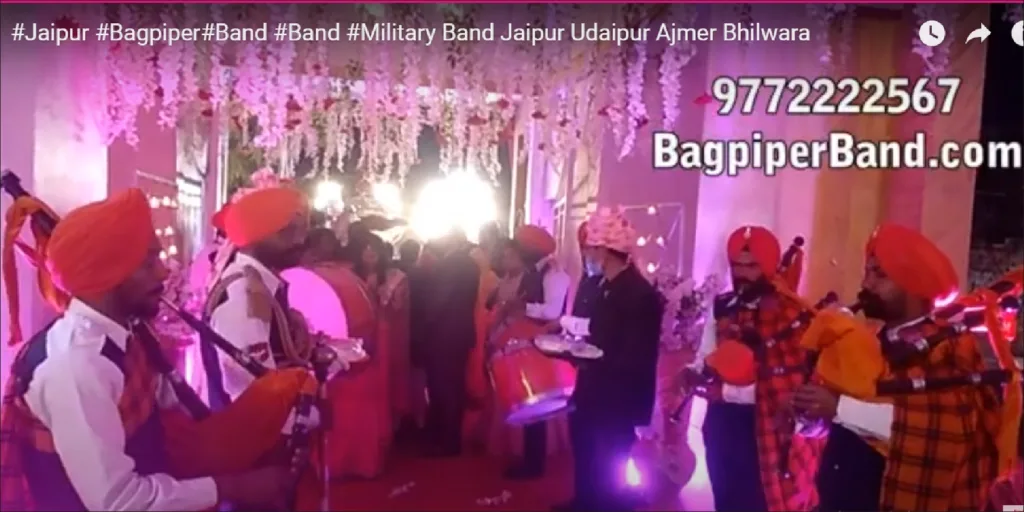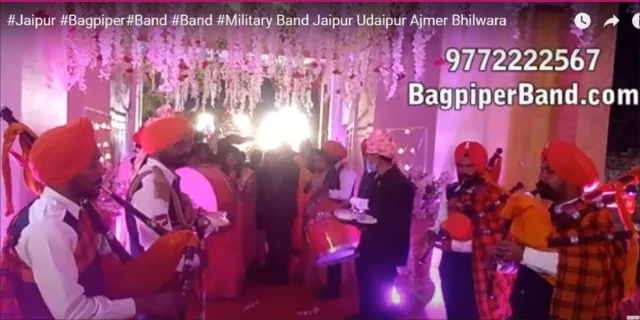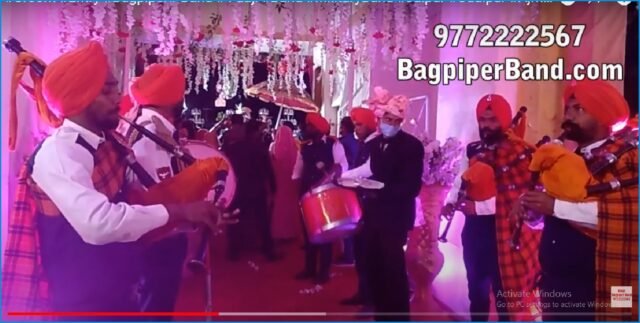Unveiling the Enchanting World of Bagpipe Bands: Unearthed Historical Facts and Terminology Glossary
Còmhlan Pìoba-Mòr Fiosrachadh Eachdraidheil Inntinneach Briathrachas Briathrachas Is dòcha nach eil fios agad Bagpipe Band Interesting Historical Facts Terminology Glossary You May Not Know
Tha còmhlain-phìoba air a bhith nam pàirt riatanach de eachdraidh ciùil is chultarail, a’ fighe fonn a tha a’ freagairt ri linntean. San artaigil seo, bidh sinn a’ sgrùdadh saoghal tarraingeach còmhlain-phìoba, a’ sgrùdadh fhìrinnean eachdraidheil inntinneach agus a’ fosgladh briathrachas briathrachais a chuireas seun sònraichte ris an traidisean ciùil seo.
Turas Eachdraidheil:
Faodar freumhan còmhlain-phìoba a lorg air ais linntean, le tùsan freumhaichte ann an diofar chultaran air feadh an t-saoghail. Ged a tha Alba gu tric co-cheangailte ri pìoban, tha eachdraidh bheairteach aig na h-ionnsramaidean seo ann an dùthchannan mar Èirinn, an Spàinn, agus an Ear Mheadhanach. Tha còmhlain-phìoba air pàirt chudromach a ghabhail ann an suidheachaidhean armachd agus sìobhalta, a’ comharrachadh thachartasan agus chomharrachaidhean cudromach air feadh eachdraidh.
Balmoral – An seòrsa ceann-aodach còmhnard “tam” a bhios air a chaitheamh le Èideadh Gàidhealach.
Caber (kaber) – am pòla 16-20 troigh a dh’fhaid le cuideam eadar 80 agus 100 not air a thionndadh ceann thairis air ceann ann an tachartas Caber Toss.
Ceilidh (kay-Lee) – Cruinneachadh sòisealta le seinn, dannsa, agus pìobaireachd. Pàrtaidh.
Ceilteach (kel-tic) – Buadhair a tha a’ toirt iomradh air aon de na treubhan tràtha ann an Alba, m.e. ealain Cheilteach, cànan Cheilteach.
Feadan – Am pàirt sin den phìob-mhòr a chumas an cluicheadair le a làmhan, gus fonn an fhoinn a chluich.
Clann (klan) – Aonad teaghlaich an toiseach, thàinig an cinneadh gu bhith na phrìomh aonad poilitigeach, eaconamach agus sòisealta de Ghàidhealtachd na h-Alba gus an deach an t-òrdugh poilitigeach a chuir fo chois ann an 1745.
Claymore (kla-mor) – Claidheamh mòr dà-fhaobharach a chleachd Gàidheil na h-Alba.
Dirk (derk) – An claidheamh goirid a bhios uaireannan air a chaitheamh air a’ chrios le Èideadh Gàidhealach.
Dròn – Aon de na trì “tiùban” a tha a’ steigeadh a-mach à seata de phìoban-mhòra. Bidh iad sin a’ toirt seachad an tòna leantainneach a tha sònraichte do cheòl pìoba.
Pìobaire Armailteach Arm Fauji Pìobaire Còmhlan-pìoba
Màidsear-druma – Ceannard caismeachd còmhlan-pìoba. Bidh am prìomh-dhruma a’ caismeachd air beulaibh a’ chòmhlain agus a’ giùlan a’ mhaide.
Gleann Garraidh (Gleann-Garraidh) – An seòrsa ceann-aodach “aghaidh is cùl” a bhios uaireannan air a chaitheamh le Èideadh Gàidhealach.
Brògan Ghillie – Na brògan le bàrr sgiath gun teanga a bhios còmhlain-phìoba a’ caitheamh.
Gillie Chaluim – Dannsa a’ Chlaidheimh – An Dannsa Gàidhealach Traidiseanta.
Gàidhealtachd – Am pàirt sin de dh’Alba a tha tuath air loidhne eadar Glaschu agus Dùn Èideann.
Cilt – Sgiort fillte fad glùine mar as trice air a dhèanamh le tartan a bhios fir ann an Alba a’ caitheamh. Aodach traidiseanta na h-Alba. An toiseach plaide mhòr air a pasgadh timcheall a’ chuirp, tha timcheall air sia gu ochd slat de dh’ aodach anns a’ chilt a th’ ann an-diugh.
Piobaireach (Peeb-rock) – Ceòl clasaigeach a’ phìoba mhòir Ghàidhealach. Air a dhèanamh suas de chuspair bunaiteach le grunn atharrachaidhean.
Major Pìoba – An stiùiriche ciùil agus mar as trice am prìomh neach-teagaisg aig Còmhlan-phìoba.
Breid (Air a chluich) – An t-aodach coltach ri plaide a bhios cuid a’ caitheamh thairis air a’ ghualainn ann an èideadh Gàidhealach. An toiseach pàirt den chilt.
Breid (Plad) – Pàtran breac fighte sam bith. Chan e an aon rud ri Tartan.
Naomh Anndra – Naomh-taic na h-Alba. A’ chiad deisciobal aig Crìosd, thathar ag aithris gu bheil a chnàmhan a’ gabhail fois ann an Naomh Anndra, Alba.
Albannach – Buadhair a’ toirt cunntas air rudan a bhuineas do Alba, m.e. sliochd Albannach. Dualchas Albannach.
Albannach – Uisge-beatha air a ghrùdadh ann an Alba bho eòrna braichte. Uaireannan canar “Uisge na Beatha” ris.
Seann Truibhas (Sheen Truce) – Aon de na Dannsaichean Gàidhealach traidiseanta. Eadar-theangachadh bhon Gàidhlig gu “Seann Bhriogais” agus a’ toirt iomradh air togail a’ chasg air caitheamh a’ chill.
Sultain – Teaghlach aig nach eil ainm a’ chinnidh, ach a tha co-cheangailte ris a’ chinneadh agus aig a bheil còir an tartan aca a chaitheamh, m.e. ‘S e sept de Chlann Mhic an Tòisich a th’ ann an Shaw. Seirbheisean Màil Chòmhlain, Seirbheisean Màil Chòmhlain, Seirbheisean Còmhlain Phìoba, Seirbheisean Còmhlain Phìobairean.
Sgean Dubh (Sgean Doo) – An sgian bheag a thathar a’ caitheamh ann am mullach an t-sròin le dreasa Ghàidhealach. Eadar-theangachadh bhon Gàidhlig gu “Sgean Dubh” a tha is dòcha a’ toirt iomradh air a chleachdadh san amharc seach a dath.
Sporran – Am poca a thathar a’ caitheamh air beulaibh a’ chill, a tha na sporan no na phòcaid.
Tartan (tart-an) – Aodach air a chruthachadh le bhith a’ fighe rèiteachadh de stiallan dathte anns an dlùth leis an aon rèiteachadh de stiallan dathte anns an inneach.
Bagpipe bands have been an integral part of musical and cultural history, weaving melodies that resonate through time. In this article, we delve into the captivating world of bagpipe bands, exploring intriguing historical facts and unraveling the terminology glossary that adds a unique charm to this musical tradition.
Fiosrachadh Eachdraidheil Inntinneach Briathrachas Briathrachais mu Chòmhlan-pìoba Mhòir
Feadan: Pìob bheusach na pìoba mhòir, a’ dèanamh notaichean sònraichte a’ chiùil.
Drònan: Na pìoban a bhios a’ dèanamh fuaim leantainneach, a’ toirt cùl-raon co-sheirmeil don fhonn.
Poca: An stòras a chumas èadhar, a’ leigeil leis a’ phìobaire sruth cunbhalach a chumail suas agus an ceòl a chumail suas.
Riallan: Innealan beaga taobh a-staigh nam pìoban a bhios a’ crith gus fuaim a dhèanamh, riatanach airson tònaichean sònraichte na pìoba mhòir a chruthachadh.
Piobaireachd: Seòrsa de cheòl clasaigeach a tha sònraichte don phìob mhòir, air a chomharrachadh leis na fonnan iom-fhillte agus tòcail aige.
Ceòl Mòr: An “Ceòl Mòr,” a’ toirt iomradh air na sgrìobhaidhean clasaigeach agus foirmeil a bhios còmhlain-pìoba mhòir a’ cluich.
Fiosrachadh Eachdraidheil Inntinneach:
Ceòl Blàir: Chaidh pìoban-mòra a chleachdadh an toiseach mar ionnsramaidean cogaidh, leis an fhuaim àrd agus sònraichte aca a’ frithealadh adhbharan practaigeach agus saidhgeòlach air a’ bhlàr.
Ceanglaichean Rìoghail: Fhuair còmhlain-pìoba mhòire mòr-chòrdte ann an cùirtean rìoghail air feadh na Roinn Eòrpa, le monarcan a’ cur luach air a’ mhòrachd agus an seun sònraichte a thug iad gu subhachasan.
Neo-bhàsmhor ann an Litreachas: Tha pìoban-mòra air an neo-bhàsmhorachadh ann an litreachas, le iomraidhean ann an dealbhan-cluiche Shakespeare agus diofar dhàin, a’ taisbeanadh an cudromachd chultarail.
Tarraing Eadar-nàiseanta: Ged a tha iad tric co-cheangailte ri cultaran Ceilteach, tha còmhlain-phìoba-mòra air dachaigh a lorg ann an diofar ghnèithean ciùil air feadh an t-saoghail, a’ cur ri meas cruinneil air an fhuaim shònraichte aca.
Historical Journey:
The roots of bagpipe bands can be traced back centuries, with origins rooted in various cultures across the globe. While Scotland is often associated with bagpipes, these instruments have a rich history in countries like Ireland, Spain, and the Middle East. Bagpipe bands have played a pivotal role in both military and civilian settings, marking significant events and celebrations throughout history.
Balmoral – The flat “tam” type of headgear worn with Highland Dress.
Caber (kaber) – the 16-20 foot pole weighing between 80 and 100 pounds flipped end over end in the Caber Toss event.
Ceilidh (kay-Lee) – A social gathering with singing, dancing, and piping. A party.
Celtic (kel-tic) – An adjective referring to one of the early tribes of Scotland, e.g. Celtic art, Celtic language.
Chanter – That part of the bagpipes which the player holds with his hands, to play the melody of the tune.
Clan (klan) – Originally a family unit, the clan became the basic political, economic, and social unit of the Scottish highlands until the political oppression of 1745.
Claymore (kla-mor) – Large two-edged sword used by Scottish Highlanders.
Dirk (derk) – The short sword that is sometimes worn on the belt with Highland Dress.
Drone – One of the three “tubes” sticking out of a set of bagpipes. These provide the continuous tone unique to pipe music.
Bagpiper Military Army Fauji Bagpiper Pipe Band
Drum Major – The marching leader of a pipe band. The drum major marches in front of the band and carries the mace.
Glengarry (glen-gare) – The “fore and aft” type of headgear sometimes worn with Highland Dress.
Ghillie Brogues – The wing tip shoes without a tongue that pipe bands wear.
Gillie Chaluim – Sword Dance – The Traditional Highland Dance.
Highlands – That part of Scotland which lies north of a line roughly between Glasgow and Edinburgh.
Kilt – A knee-length pleated skirt usually of tartan worn by men in Scotland. The traditional clothing of Scotland. Originally a large blanket wrapped about the body, the present kilt contains about six to eight yards of material.
Piobaireach (Peeb-rock) – The classical music of the great highland bagpipe. Consisting of a Ground or basic theme with several variations.
Pipe Major – The musical leader and usually the principal instructor of a Pipe Band.
Plaid (Played) – The blanket-like garment worn over the shoulder by some in highland dress. Originally part of the kilt.
Plaid (Plad) – Any woven checked pattern. Not the same as Tartan.
Saint Andrew – The patron saint of Scotland. The first disciple of Christ, his bones are reported to rest in St. Andrew, Scotland.
Scottish – An adjective describing things pertaining to Scotland, e.g. Scottish descent. Scottish Heritage.
Scotch – A whiskey distilled in Scotland from malted barley. Sometimes called the “Water of Life.
Seann Truibhas (Sheen Truce) – One of the traditional Highland Dances. Translates from the Gaelic to “Old Trousers” and refers to the lifting of the ban on the wearing of the kilt.
Sept – A family not having the name of the clan, but associated with the clan and entitled to wear its tartan, e.g. Shaw is a sept of Clan Mackintosh.Band Rental Services,Band Hire Services, Pipe Band Services, Bagpipers Band Services
Skean Dubh (Skeen Doo) – The small knife worn in the hose top with highland dress. Translates from the Gaelic to “Black Knife” which probably is a reference to its intended use rather than its color.
Sporran – The pouch worn in the front of the kilt, which serves as a purse or pocket.
Tartan (tart-an) – A fabric formed by weaving an arrangement of colored stripes in the warp with the same arrangement of colored stripes in the weft.
Terminology Bagpipe Glossary of Bagpipe Terms Bagpiping Slang
The Evolution of Bagpipe Bands:
Bagpipe bands have undergone a fascinating evolution, adapting to different cultures and musical influences. From their humble beginnings as instruments of war to becoming iconic symbols in parades and celebrations, bagpipes have stood the test of time. Understanding this evolution adds depth to the appreciation of the intricate melodies produced by modern bagpipe bands.
Bagpipe Band Interesting Historical Facts Terminology Glossary
Chanter: The melodic pipe of the bagpipe, producing the distinct notes of the music.
Drones: The pipes that produce a continuous sound, providing a harmonic backdrop to the melody.
Bag: The reservoir that holds air, allowing the piper to maintain a constant flow and sustain the music.
Reeds: Small devices within the pipes that vibrate to produce sound, essential for creating the unique tones of the bagpipe.
Piobaireachd: A form of classical music specific to the bagpipe, characterized by its complex and emotive melodies.
Ceol Mor: The “Big Music,” referring to the classical and formal compositions played by bagpipe bands.
Interesting Historical Facts:
Battlefield Music: Bagpipes were initially used as instruments of war, with their loud and distinct sound serving both practical and psychological purposes on the battlefield.
Royal Connections: Bagpipe bands gained popularity in royal courts across Europe, with monarchs appreciating the grandeur and unique charm they brought to celebrations.
Immortalized in Literature: Bagpipes have been immortalized in literature, with references in Shakespearean plays and various poems, showcasing their cultural significance.
International Appeal: While often associated with Celtic cultures, bagpipe bands have found a home in diverse musical genres worldwide, contributing to a global appreciation for their unique sound.
Fiosrachadh Eachdraidheil Inntinneach mu Chòmhlan-pìoba – Briathrachas is dòcha nach eil fios agad
Le bhith a’ sgrùdadh eachdraidh bheairteach agus briathrachas chòmhlain-phìoba, nochdaidh sinn saoghal de bhrìgh chultarail agus ealain ciùil. Agus sinn a’ cur luach air na fonnan draoidheil a bhios na h-ionnsramaidean suaicheanta seo a’ dèanamh, leig dhuinn cuideachd an turas eachdraidheil aithneachadh a tha air còmhlain-phìoba a chumadh gu bhith nan eintiteasan ciùil neo-bhàsmhor a tha iad an-diugh.
Fiosrachadh Eachdraidheil Inntinneach mu Chòmhlan a’ Phìoba Mhòir Briathrachas nach eil fios agad!
A bheil a h-uile pìob mar an ceudna ann am còmhlan, no a bheil diofar sheòrsaichean agad?
Tha a h-uile pìob den aon seòrsa (Pìoban Mòra na Gàidhealtachd), agus tha an t-àrdachadh co-ionann. Ach, tha na pìoban a’ tighinn bho dhiofar luchd-dèanaidh.
Briathrachas Eachdraidheil Inntinneach mu Chòmhlan a’ Phìoba Mhòir Briathrachas
Dè an siostam ìrean a bhios còmhlain agus daoine fa leth a’ cleachdadh?
Tha an ìre a’ comharrachadh na h-ìre aig a bheil a’ chòmhlan no an neach fa leth a’ farpais.
Faic an duilleag Ìrean airson eisimpleirean de chomas còmhlain aig gach ìre.
Gu sìmplidh, mar as àirde an ìre, is ann as fheàrr a bhios a’ chòmhlan no an neach fa leth. Tha còrr is deichnear bhall aig Sgioba Coileanaidh Drumaichean Còmhlan a’ Phìoba Mhòir a bhios a’ farpais leotha fhèin aig ìre Proifeasanta (Fosgailte) no Ìre I Neo-dhreuchdail. Tha an clàr a leanas a’ sealltainn raon nan ìrean PBA air an liostadh bhon ìre as àirde chun an ìre as ìsle:
ÌREAN ÌRE FARPAIS
Còmhlain
Ìre I (Prìomh) gu Ìre V (Tòiseach)
Pìobairean
Proifeasanta, an uairsin Ìre I Neo-dhreuchdail gu Ìre V Neo-dhreuchdail (Tòiseach)
Drumaichean Snare
Proifeasanta, an uairsin Ìre I Neo-dhreuchdail gu Ìre IV Neo-dhreuchdail (Tòiseach)
Drumaichean Tenor
Proifeasanta, Ìre I Neo-dhreuchdail agus Ìre II Neo-dhreuchdail (Tòiseach)
Drumaichean Beus
Proifeasanta agus Neo-dhreuchdail
Prìomh Dhrumaichean
Proifeasanta agus Neo-dhreuchdail
Ciamar a thèid còmhlain phìoba a bhreithneachadh? Dè an diofar eadar deagh choileanadh agus droch choileanadh?
A. Tha còmhlain-phìoba air am breithneachadh a rèir nan slatan-tomhais a leanas:
Tionndadh
Tòn
Tempo
Aonachd (A’ cluich mar aon taobh a-staigh earrann leithid earrann na pìoba)
Còmhlan-ciùil (A’ cluich còmhla thar nan earrannan)
Abairt
Frasadh
Coileanadh
Ceòlmhorachd
Cothromachadh/measgachadh eadar na pìoban agus na drumaichean
Ionnsaighean (tòiseachaidhean)
Gearraidhean (stadan)
Bagpipe Band Interesting Historical Facts Terminology Glossary You May Not Know
Exploring the rich history and terminology of bagpipe bands unveils a world of cultural significance and musical artistry. As we appreciate the enchanting melodies produced by these iconic instruments, let us also recognize the historical journey that has shaped bagpipe bands into the timeless musical entities they are today.

Bagpipe Band Interesting Historical Facts Terminology Glossary You May Not Know
Bagpipe Band Interesting Historical Facts Terminology You May Not Know!
- Are all the pipes the same in a band, or do you have different kinds?
- All of the pipes are the same kind (Great Highland Bagpipes), and are pitched identically. The bagpipes do come from different makers, however.
Bagpipe Band Interesting Historical Facts Terminology Glossary
- What is the grading system used by bands and individuals?
- The grade indicates the level at which the band or individual competes.
See the Grades page for examples of band competency at each grade.
Put simply, the higher the grade, the better the band or individual. The Bagpiper Band Drums Performance Team, has over ten members who compete individually at either the Professional (Open) or the Amateur Grade I level. The following chart shows the range of PBA grades listed from highest to lowest:
- COMPETITION GRADE LEVELS
- Bands
- Grade I (Premier) to Grade V (Novice)
- Pipers
- Professional, then Amateur Grade I to Amateur Grade V (Novice)
- Snare Drummers
- Professional, then Amateur Grade I to Amateur Grade IV (Novice)
- Tenor Drummers
- Professional, Amateur Grade I and Amateur Grade II (Novice)
- Bass Drummers
- Professional and Amateur
- Drum Majors
- Professional and Amateur
- How are pipe bands judged? What differentiates between a good and bad performance?
A. Pipe bands are judged on the following criteria:
Tuning
Tone
Tempo
Unison (Playing as one within a section such as the pipe section)
Ensemble (Playing together across the sections)
Expression
Phrasing
Execution
Musicality
Balance/blend between the pipes and drums
Attacks (starts)
Cut-offs (stops)
Còmhlan Pìoba-Mòr Fiosrachadh Eachdraidheil Inntinneach Briathrachas Briathrachas Is dòcha nach eil fios agad : Bagpipe Band Interesting Historical Facts Terminology Glossary You May Not Know!
Q. Are there any other pipe bands in the area?
- There are several smaller Grade V bands in the area.
- Why do pipe bands usually perform in a circle?
-Tradition mostly. Also, it is easier to hear what the rest of the band is doing, so the unison and ensemble are both improved.Bagpipe Band Interesting Historical Facts Terminology GlossaryThese are some of the Bagpipe Band Interesting Historical Facts Terminology Glossary You May Not Know!
Tags: Bagpipe bands historical journey, Evolution of bagpipe ensembles, Bagpipe music heritage, Global influence of bagpipe music, Historical roots of bagpipe bands, Unique sound of bagpipe bands, Bagpipe terminology guide, Artistry behind playing bagpipes, Historical significance of bagpipes, Pivotal role of bagpipes in history, Royal celebrations and bagpipes, Lesser-known stories of bagpipes, Enchanting bagpipe melodies, Musical allure of bagpipes, Bagpipe traditions around the world, Cultural nuances of bagpipe performances, Global cultural impact of bagpipe bands, Bagpipes as a symbol of cultural diversity, Magic of live bagpipe performances, Mesmerizing bagpipe concerts, Bagpipes in literature and arts, Representation of bagpipes in popular culture, Bagpipe bands inspiring creativity, Bagpipe learning resources, Tutorials, courses, and tips for aspiring bagpipers.




